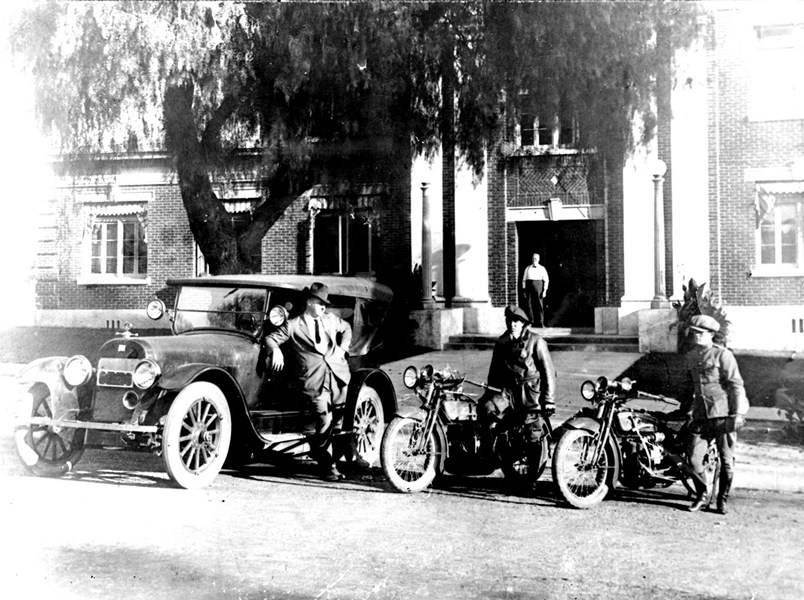In early March 1927, twenty-year-old Tony Santi arrived at the Burbank Police Department to report an assault on his girlfriend, a fifteen-year-old Burbank high school girl, Mary Garard.

Tony sat in the station and related a bizarre tale to officers. Two weeks earlier, the couple drove out to a cabin in Kagel Canyon in the hills west of Roscoe. They wanted to prepare it for a party later that day. Tony said the cabin had no running water, so he went out to a stream to fill their bucket. He told Mary he would be gone for about fifteen minutes.
When he returned, he found Mary bound and gagged. He released her, and she told him what had happened. She said shortly after he left to get water, two men, reeking of alcohol, turned up at the cabin door. They asked her if she was alone and she told them no. She said her boyfriend was due to return any minute. Then, without warning, the men grabbed her arms. They bound her and stuffed a rag into her mouth to stifle her screams. They dragged her to a cot. One man produced a knife and, as Mary struggled, he cut into the flesh of her left shoulder the letters NR. The men said, “We are Night Riders. Let this be a lesson to you.”

Mary’s parents knew nothing about the assault until they arrived home from a trip to Colorado a few days later. Tony told police he was making the report against the wishes of Mary and her parents. They wanted the matter dropped.
Because the attack occurred in Los Angeles County territory, Burbank police referred the case to Captain William Bright of the Sheriff’s Department. Captain Bright told reporters that because Mary and her parents were unwilling to pursue the matter, he had no choice but to drop the investigation.
On the heels of Captain Bright’s announcement, Mary and her mother arrived at the Sheriff’s Department ready to swear out a complaint against the perpetrators of what newspapers referred to has a branding. Bright requested a John Doe warrant.
On the day following the Garard’s change of heart in the case, Mary and Tony appeared again in Captain Bright’s office. This time, they told him a different story.
The entire branding incident was a hoax perpetrated by the young lovers. As a minor, Mary required her parents’ consent to marry. They refused. Mary and Tony then concocted the branding scheme so her parents would see the wisdom of granting her a full-time protector. Sheriffs arrested Tony for assault and held Mary as a witness. Tony appeared in Judge MacCoy’s court to answer for two statutory charges. They fixed his bail at $1000.

It took until July to unravel Mary’s and Tony’s lies, but investigators finally sorted it out. In Superior Judge Elliot Craig’s court, Tony pleaded guilty to one of two counts charging a serious offense. (I think we can read between the lines and assume that Tony and Mary had intercourse.)
Mary confessed it was she who carved NR into her left shoulder to convince her parents to allow her to marry. Mutilating yourself is not the best way to show maturity. Her parents were wise to turn her down.
Mary and Tony went to an extraordinary amount of trouble to be together. So, what became of them? A superficial search of ancestry.com shows they married after all in December 1927, and may have divorced in the late 1930s. The course of true love never did run smooth.

Interesting story, thanks for sharing.
Thanks Joan, another good one. The Roscoe community that is mentioned was the old name for Sun Valley. When I was a kid (many moons ago) you would still occasionally see “Roscoe” on businesses.
Thank you, Gary. I wondered about Roscoe; now I know.
Joan